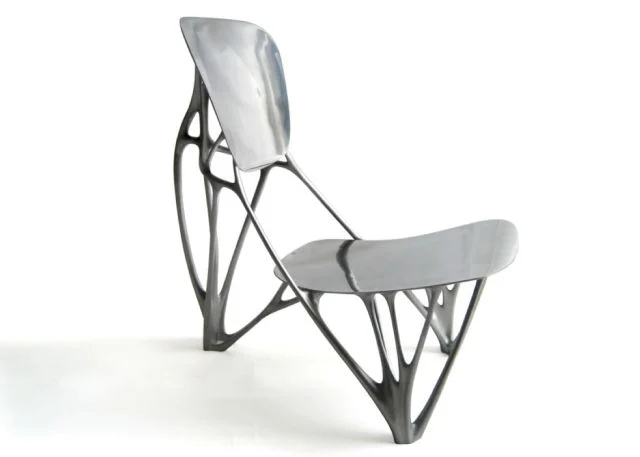What makes a furniture or object collectible? For me, it should first be absolutely divine in its creation - that means nothing like you've ever seen before but also something that makes you wonder how in the world they created it. The furniture is usually architectural or sculptural with considerable engineering, artistry and skills behind it. In the vintage collectibles category, so many great vintage designs are being copied easily today but when Jean Prouvé originally made his Compas table in the early 1950s it was no ordinary table for his time and the technology available then. If you could get your hands on an original Jean Prouvé piece, that is a collectible. In contemporary furniture design, there are a handful of product designers today whose works are highly coveted. Their work straddles functional furniture, technology, science, architecture and art. Those of Elizabeth Garouste & Matteo Bonetti, Marc Newson, Ron Arad, Zaha Hadid and Claude & Francois-Xavier Lalanne come to mind. In a way, a collectable also has something to do with demand and supply and unless it's a prototype, vintage or contemporary, mass production is not a collectible. Limited editions can be collectibles. But when a piece is truly extraordinary and innovative it is usually also one that is incredibly difficult to make. They are crafted meticulously with unusual or new materials, using complicated machinery and tools requiring highly skilled labor and in a very controlled environment like a lab. An engineering and technological feat almost every time it is made thus taking a serious amount of time to produce and hence very rarely available. In this sense, these pieces are a rare work of art.
Joris Laarman, a young Dutch designer is one of those contemporaries I very much admire as he defies what functional art is and can be - a true innovator in every sense of the word. Many of his creations are very much a collectible attested by the number of world class museums that have added his work to their permanent collections. Like many of his predecessors who have experimented with new materials and design and where some of their creations were translated from their original designs leading to mass productions (while others, often due to their complexity, remain limited custom creations), Laarman's experiments have led him to fantastical creations while constantly trying new possibilities, most recently, with 3-D printing. The thing to note though is that he is not only innovative in his design and his manufacturing process he is also creating the all important new "digital" material that will work through a 3-D printer to create his furniture. Of course some of his 3-D printed designs will eventually lead to mass production. But I can't help but think that, as we sit in the brink of a new generation of design, Laarman gives new meaning to the term "pushing the envelope". What can I say, Il est tout ma tasse de thé!
- xo Raji
All images via JorisLaarman.com and via Flickr






